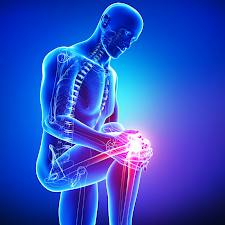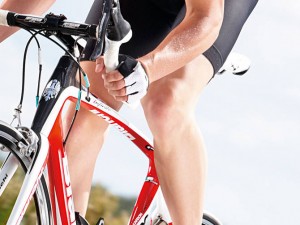
Unfortunately, I have had a lot of experience with knee problems. What is even worse is that most of the knee injuries I had could have been prevented if I knew what I know now.
Even though cycling is prescribed for so many different injuries as a rehabilitation process due to its low impact nature, it is a very repetitive motion and so overuse injuries can occur. On average a cyclist will pedal 5000 strokes an hour, that is 1 million pedal strokes every 200 hours! Per knee!
If something is out of line, you are likely going to feel it after 1 million pedal strokes… if not before. Make sure you are set up properly.
Bike Fit
One of the first things that should be looked at is the overall bike fit. If you are able to afford a professional bike fitting I highly recommend it, not only will it save your knees but it will put you in the most comfortable and powerful cycling position. Some key areas are as follows:
Cleat Position and Cleat Float
Your cleat position and amount of cleat float have a lot to do with knee injuries. For a proper cleat position read my previous post by clicking here.
Cleat float refers to your ability to move your foot side to side while still clipped in. Suggested ranges are from 5 – 13 degrees of rotation. Many people tighten the pedal as tight as humanly possible so that they do not loose any power; however, in most cases, this does not allow your knee to track in its most natural line. It also prevents your foot from being in its most natural position. If this is you try loosening your cleats.
Saddle Height
If your saddle is too high you may develop knee pain in the back of the knee, if it is too low the knee pain will be at the front of the knee.
A quick check on proper saddle height can be done by measuring your inseam while barefoot, with your feet shoulder width apart. (Floor to crotch) Multiply this result by 0.883. This height should approximate your saddle height from the middle of the bottom bracket axle to the top of the saddle. (Measurement taken along the seat tube).
This is just an approximate height, adjust it according to your riding style i.e. if you point your toes excessively then the seat height should be slightly higher.
Saddle Fore and Aft Position
Get on a stationary trainer and rotate the cranks to the 3 and 9 o’clock position. Have someone grab a plumb line and measure from your forward tibial turberosity (the bony bump below the knee cap) to the pedal axel. Move your seat position fore or aft until the tibial tuberosity is in line with the pedal axel.
On a triathlon specific bike your knee will actually be a bit more forward than this.
Pedal Stroke
Make sure you have good pedaling technique bicycling and do not allow your knees to push outwards or pull inwards.
Too Much, Too Hard, Too Soon
When spring arrives it is nearly impossible for me to contain myself in any of these three categories… Hence all my knee injuries. Instead of cutting back when spring arrives I have beat indoor trainer boredom and prepped myself for the spring!
A general rule of thumb in cycling is not to increase these categories by more than 10% a week.
If I start to feel knee pain now, I am confident it is not my bike fit so I decrease these categories slightly (too much, too hard, too soon) and I actually switch to mountain biking more. Strangely enough, mountain biking hurts less because I am constantly changing my position, where as in road biking I am generally always in the same position doing the same repetitive motion.
Knee Pain Cycling Bonus Tips
Less likely to be the source of your knee pain cycling, but why risk it? Plus a great preventative measure.
Warm up
Let your joints, tendons and muscles warm up before committing to a hammerfest right out of the gate. Much more on this in a previous post called Cycling warm up benefits.
Spin More Mash Less
Especially on hills try to keep your cadence up, if your cadence slows then stand up out of the saddle to continue. Standing while climbing will be less strenuous on your knees if the grade is too steep to spin.
Keep Your Knees Warm
What is worse than cycling in the cold? Being cold and cycling in the cold! I wear some nice tights or bib tights, and if it gets really cold I actually wear the tights under some pants (Get it at your Local bike shop because you want to try it on first). I do not need any more excuses to not brave the cold. Dress properly and it can still be very enjoyable.
Different Leg Length
 I am hesitant to post this as I know people get shims in their shoes unnecessarily all the time.
I am hesitant to post this as I know people get shims in their shoes unnecessarily all the time.
A quick test is it to lie on floor and make a 90 degree angle with your knees while your feet are flat against the wall. If one knee sticks out more (away from the wall) then that tibia is longer. If one knee is higher up the wall (further from the ground) then the femur of the respective leg is longer. This is a quick test and is a starting point to investigate further. X-rays would be more reliable.
For most of us the left leg can be shorter one day and then the right leg shorter the next. Lie with your back on the ground and have someone pull your legs out… are they even? Good! You probably do not need shims you just need to stretch it out and have someone pull on your legs once in a while. More on this later.
Post Ride Massage – Prevention
A post ride massage on a foam roller was what saved my knees in the end. I had VERY tight IT bands and now I just spend a few minutes after a few hour ride on a roller and I am good to go. Read post ride massage – selfie for more information.
Summary
Knee pain cycling can change your world very quickly. My issue was always that I was doing too much, too soon and not allowing my body to recover. Listen to your body, it is designed to let you know something is wrong before it is a chronic problem. Act sooner rather than later. Ease up on your training and seriously consider your bike fit.